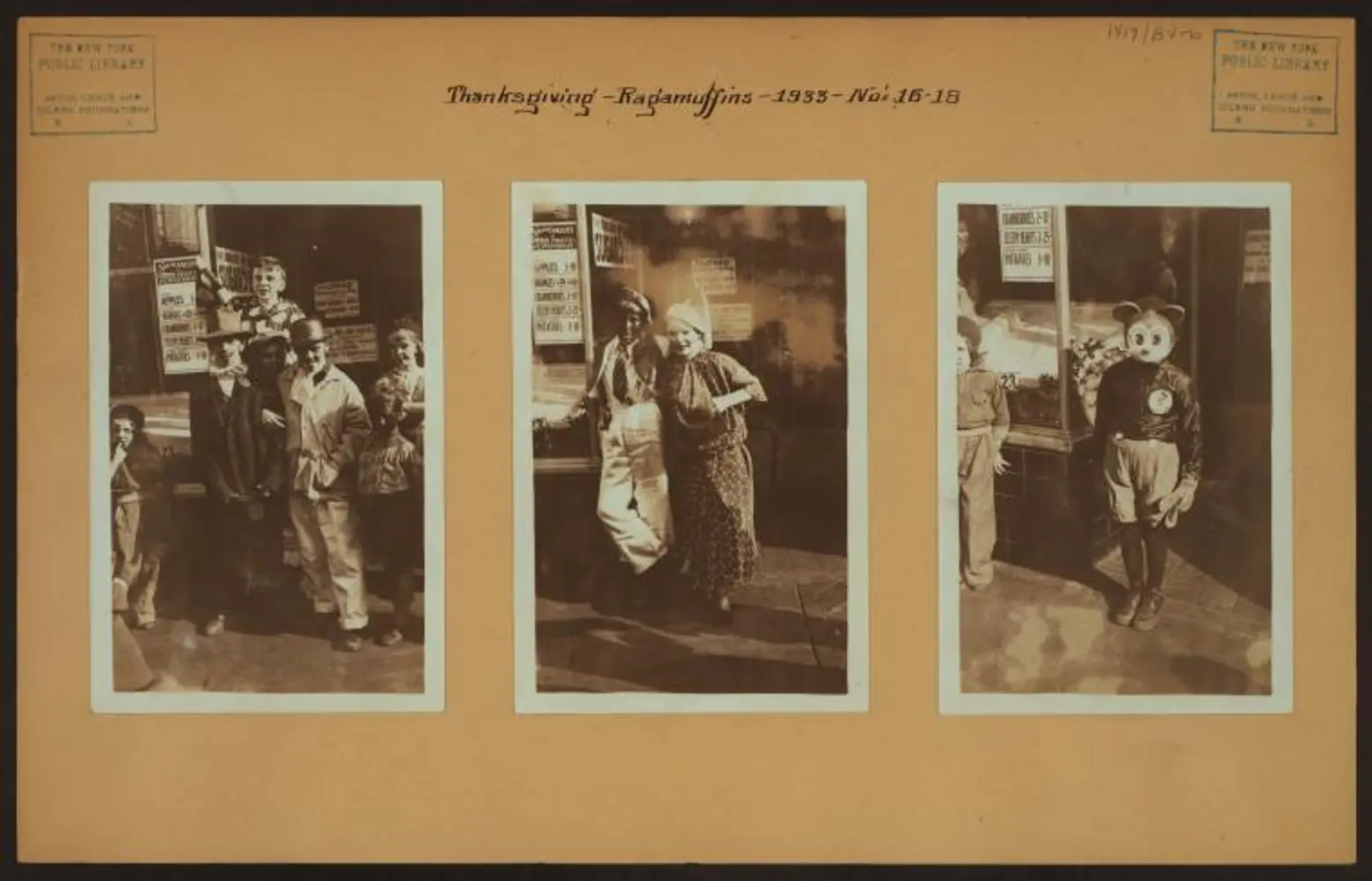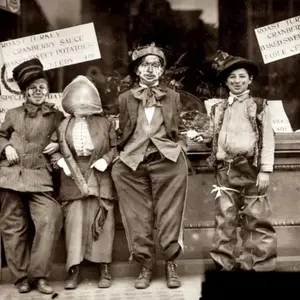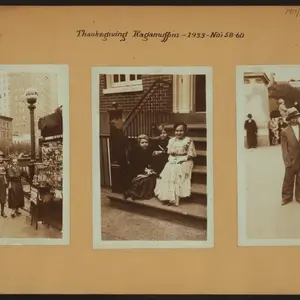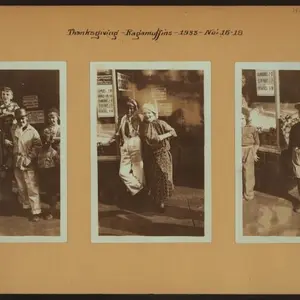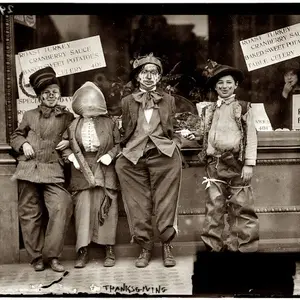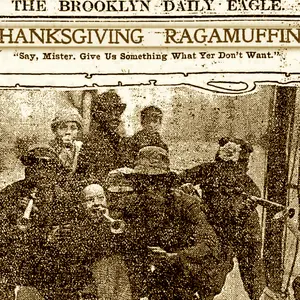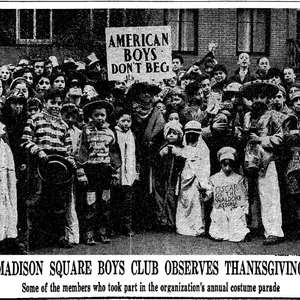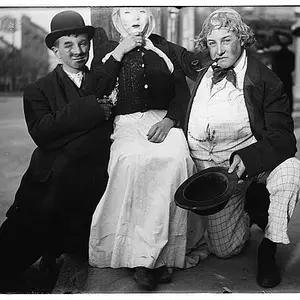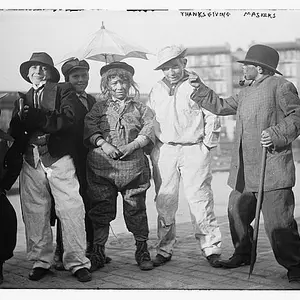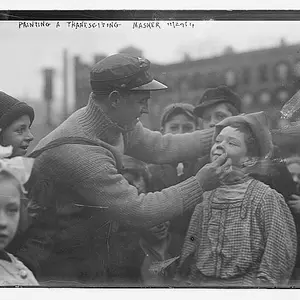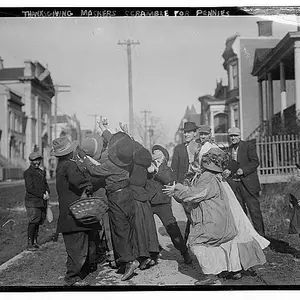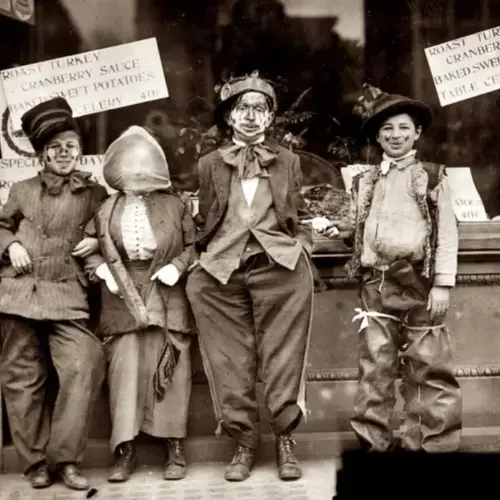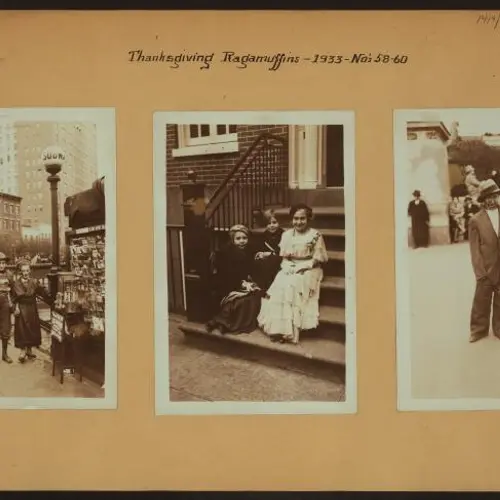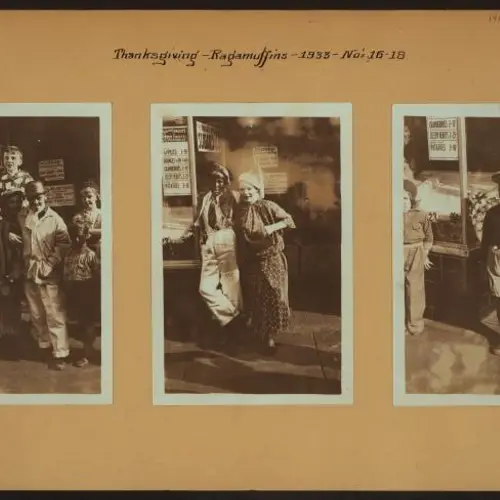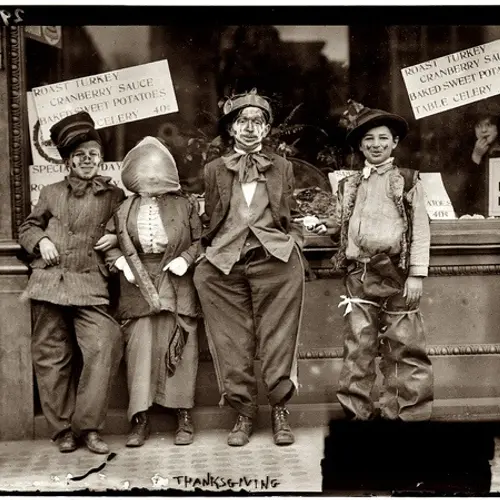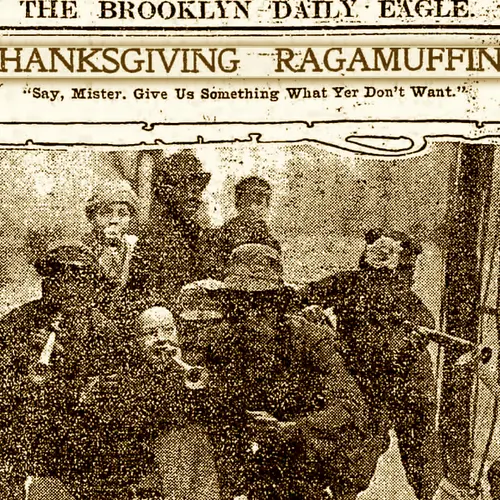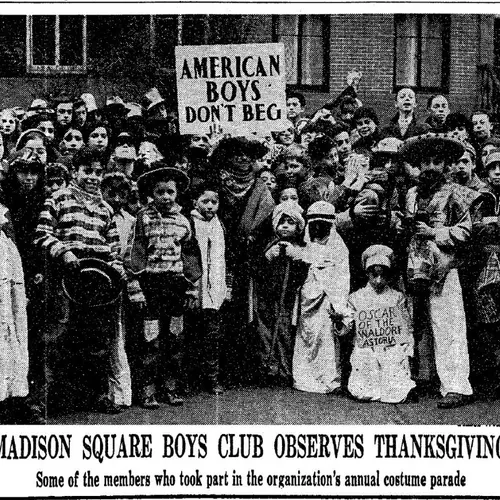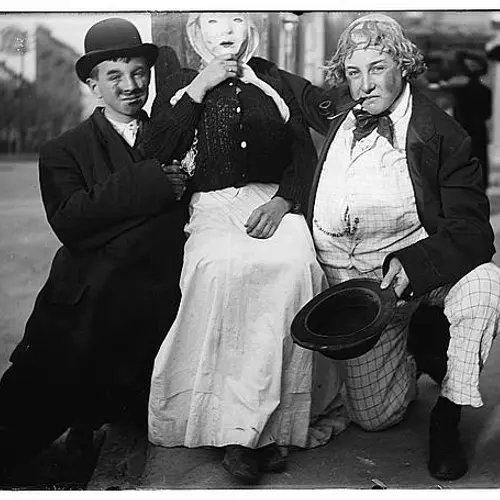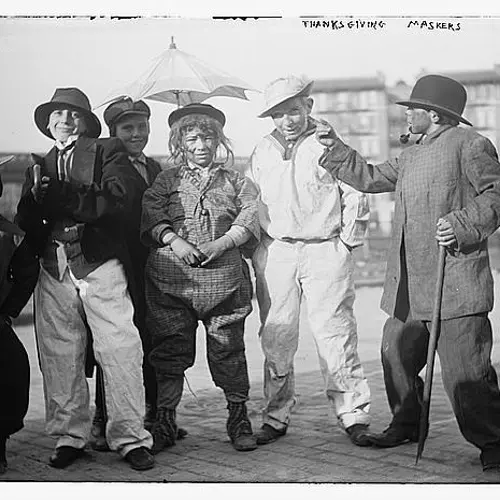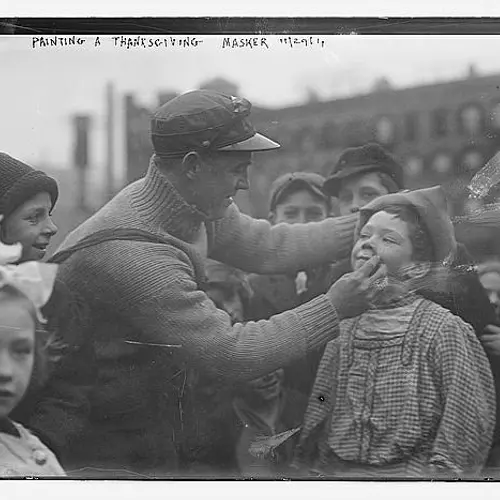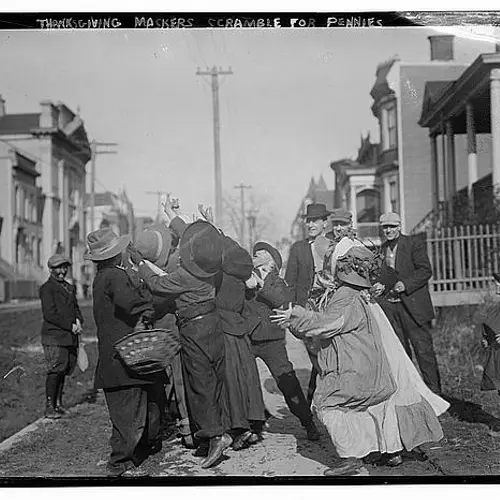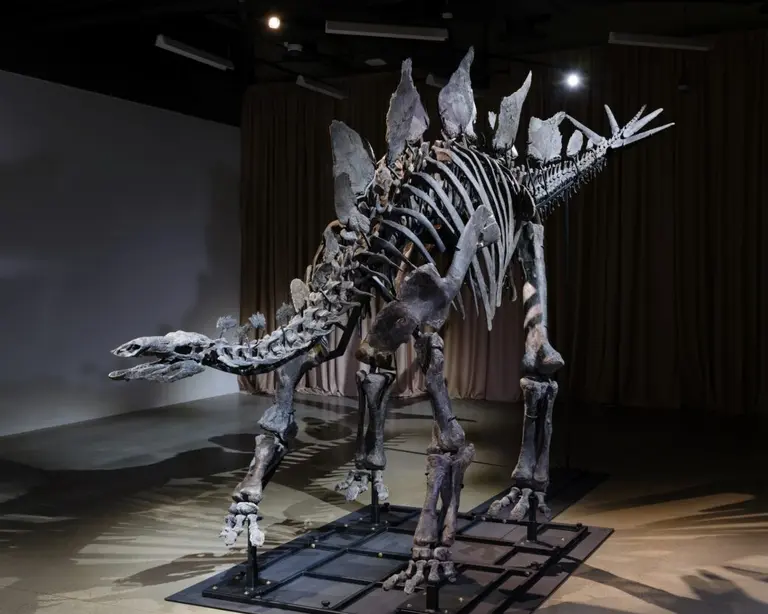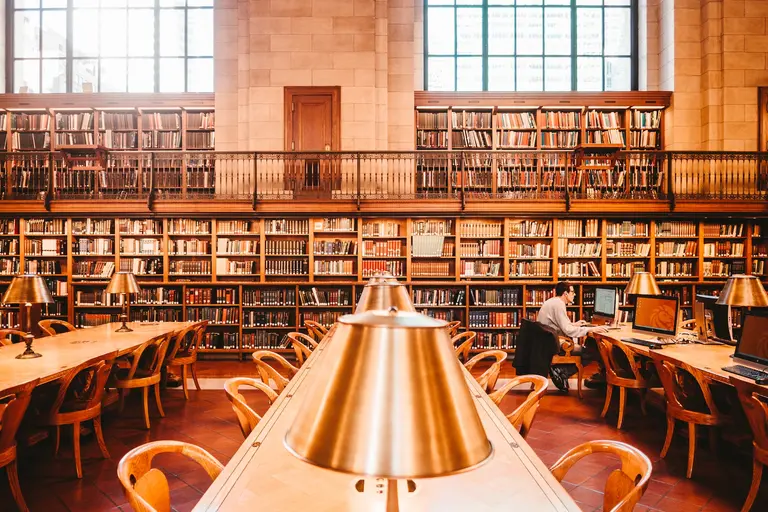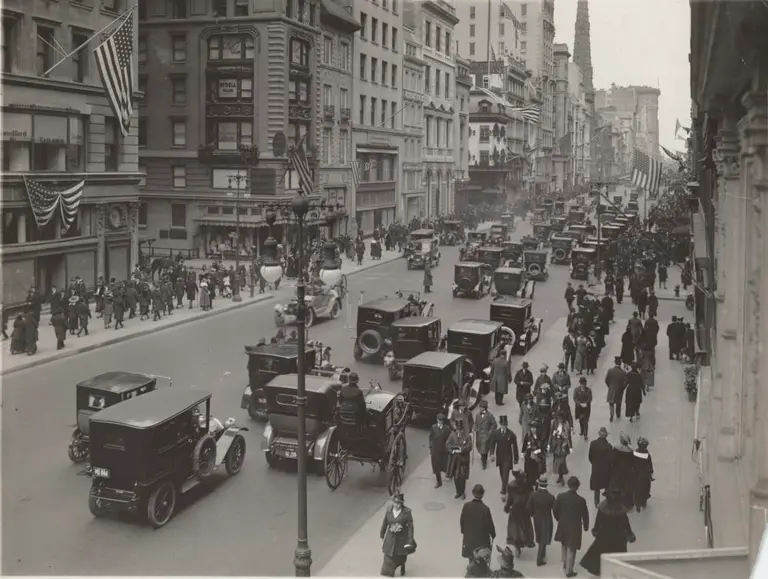Thanksgiving ‘ragamuffins’ started a door-to-door tradition that preceded Halloween

Photo via the Library of Congress
Before Thanksgiving became a holiday known for stuffing down food with the people you love, it looked a whole lot like Halloween. That is thanks to the Thanksgiving “ragamuffins,” children who dressed up in costume and wandered the streets in search of swag, asking passerby and shop owners, “Anything for Thanksgiving?” The practice could be found everywhere from Missouri to Los Angeles, but it was a particularly strong tradition in New York City.
“Thanksgiving masquerading has never been more universal,” said a New York Times report from 1899. “Fantastically garbed youngsters and their elders were on every corner of the city. Not a few of the maskers and mummers wore disguises that were recognized as typifying a well-known character or myth. There were Fausts, Uncle Sams, Harlequins, bandits, sailors. All had a great time. The good-humored crowd abroad was generous with pennies and nickels, and the candy stores did a land-office business.”
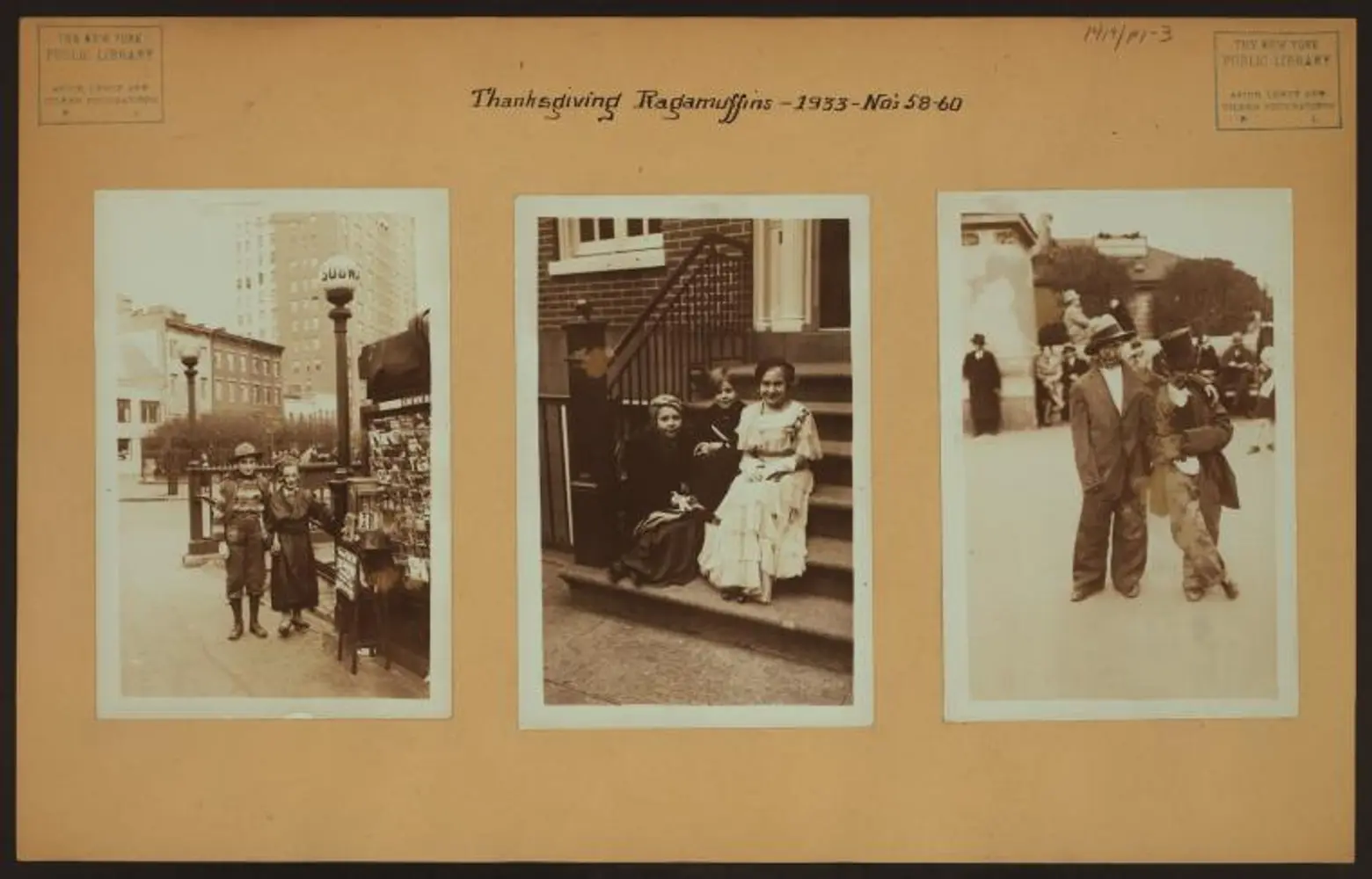 Photos via the New York Public Library
Photos via the New York Public Library
According to Ephemeral New York, New Yorkers started celebrating Thanksgiving as an official holiday back in 1817, decades before it became a nationalized holiday in 1864. It’s not entirely clear how the ragamuffin tradition picked up by the 1870s, but it’s said there may be connections to the European celebrations on St. Martin’s Day (November 11th) or St. Catherine’s Day (November 25th). Both holidays signified the end of fall, with children going out and receiving donations of food or money to be brought to the church. As Brownstone Detectives put it, “…With the large numbers of immigrants flowing into the country like a faucet full-on in the late 1800s, it would not be odd that such a tradition caught on here.”
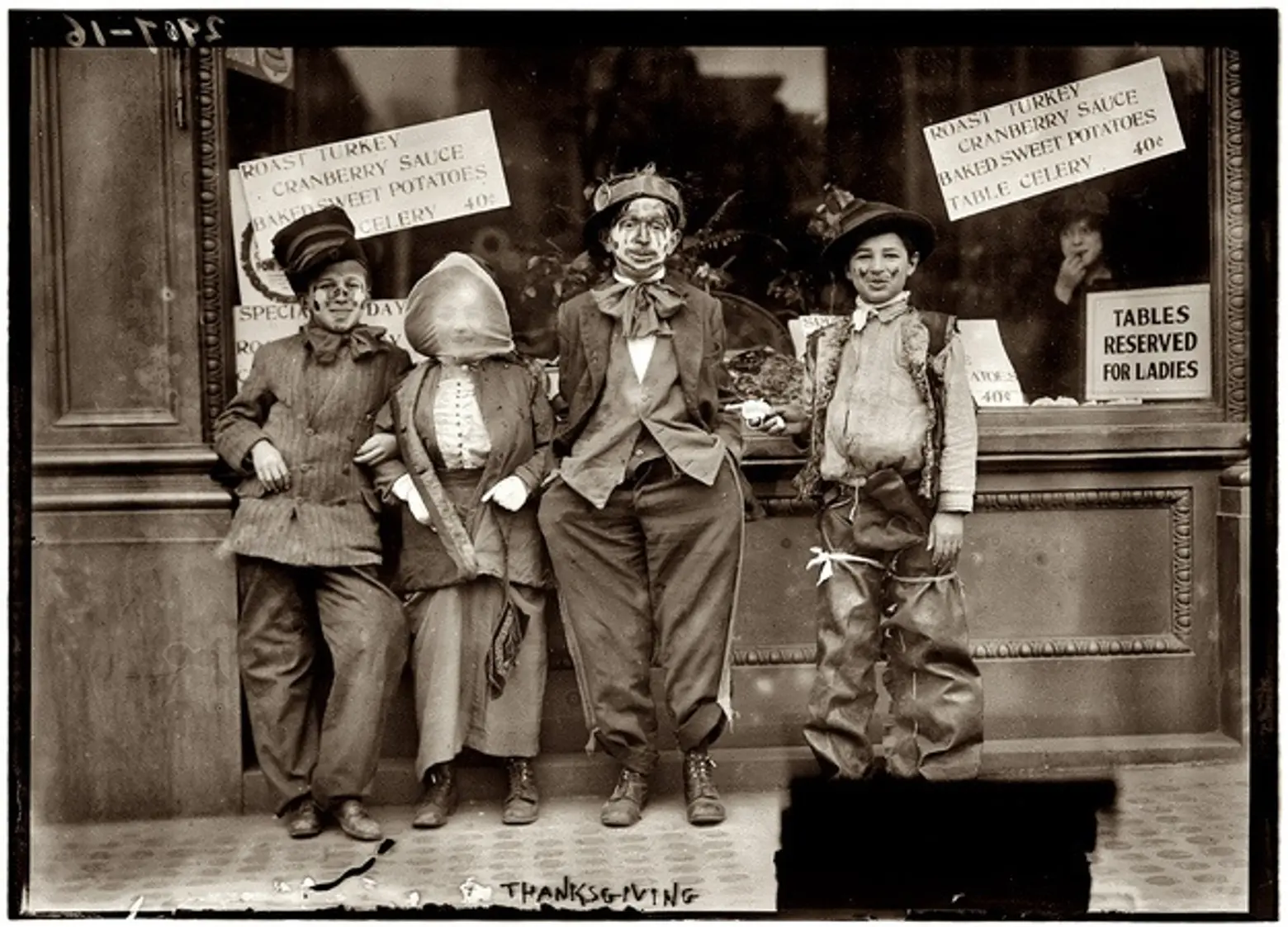 Photo via the New York Public Library
Photo via the New York Public Library
The earliest ragamuffins dressed in rags as parodies of beggars, which is how they earned their nicknames. Then they would ask neighbors and adults on the street, “Anything for Thanksgiving?” Common donations were pennies, apples, or a piece of candy.
If dressing up like a beggar sounds like a strange way to celebrate the holiday, visitors to New York at the time were surprised by the custom. “Those of you who have always lived in New York do not think of this Thanksgiving game of ragamuffin as a strange custom, but the strangers coming to our city are greatly surprised, and ask what it means,” the Reverend James M. Farrar told the New York Tribune in 1909. Later ragamuffins got more creative, dressing as sailors, bandits and Disney characters. In some areas, these “masqueraders” won prizes for the best getup.
 Ragamuffins circa 1910-1915, via the Library of Congress
Ragamuffins circa 1910-1915, via the Library of Congress
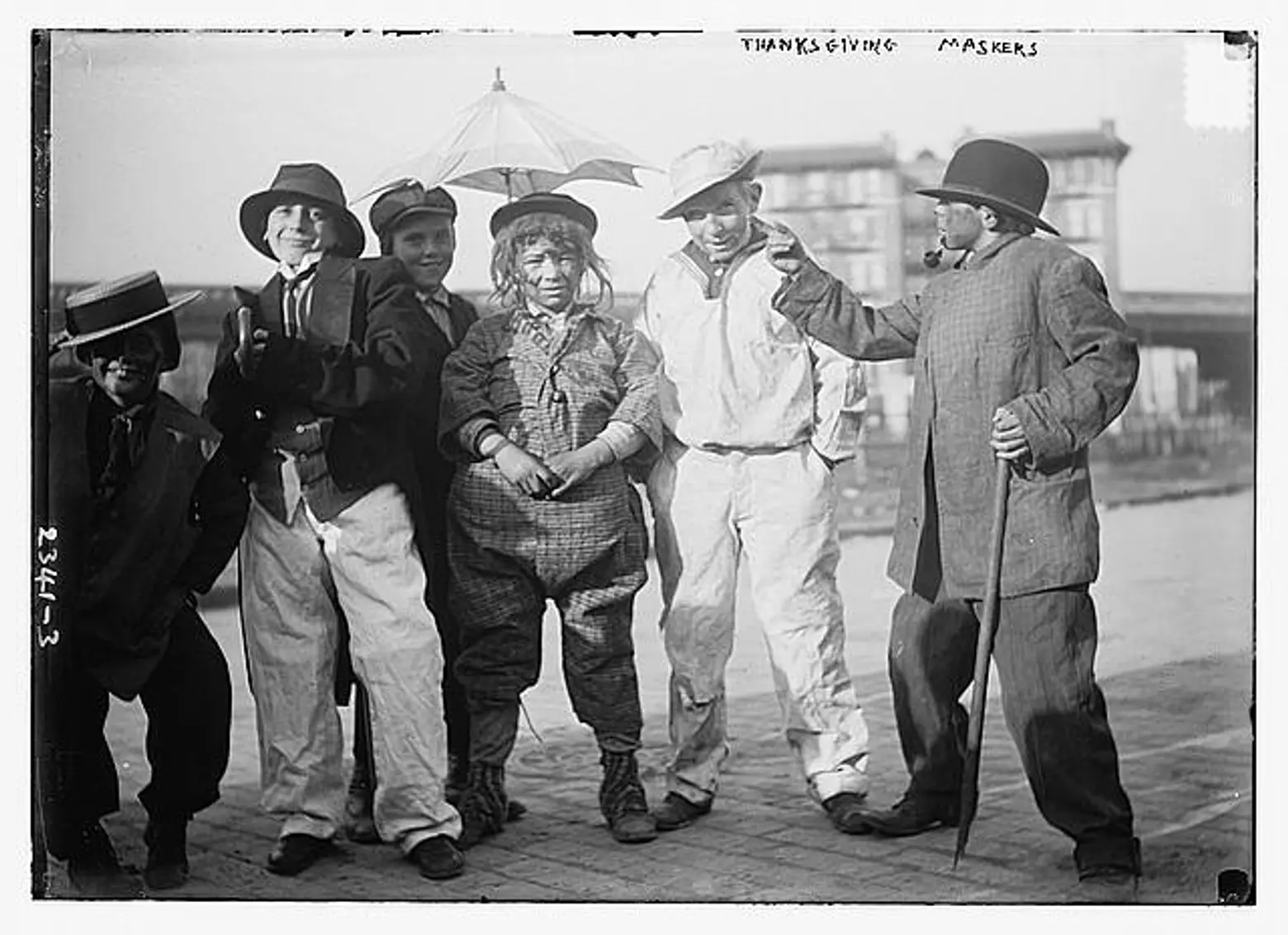 Ragamuffins circa 1910-1915, via the Library of Congress
Ragamuffins circa 1910-1915, via the Library of Congress
But by the 1930s, these young ragamuffins started getting on New Yorker’s nerves. According to the New York Public Library, a series of articles appeared in newspapers calling for the end of the tradition. William J. O’Shea, the superintendent of schools at the time, sent out a circular that stated that “modernity is incompatible with the custom of children to masquerade and annoy adults on Thanksgiving day.” He went on to claim that “many citizens complain that on Thanksgiving Day they are annoyed by children dressed as ragamuffins, who beg for money and gifts.”
The papers continued to report on the dying trend, writing that it mostly lived on in the outer boroughs. One report stated that ragamuffins could only be spotted “in Flatbush, the Bronx, Greenpoint, and other places where the subway lines end.” A New York Times trend piece of the time stated that “The ragamuffin is vanishing.”
In 1937, organizations like the Madison Square Boys Club began having Thanksgiving parades as an effort “to discourage the Thanksgiving ragamuffins,” according to the NYPL. By 1940, as many as 400 children came to march with the parade, with some waving signs that “American boys do not beg.” Many parading boys still dressed as ragamuffins, while others were in costumes that ranged from an alarm clock to Michelangelo.
Amazingly, the Thanksgiving Ragamuffin parades lasted until the 1950s. You could look at the event as the precursor to today’s Macy’s Thanksgiving Day Parade, which kicked off in the 1920s. In fact, it was the Macy’s Day Parade that ultimately overshadowed the ragamuffins after the success of the 1947 film Miracle on 34th Street. Ragamuffin traditions also shifted as Halloween became more popular, and the night for costumes and candy moved up to October 31.
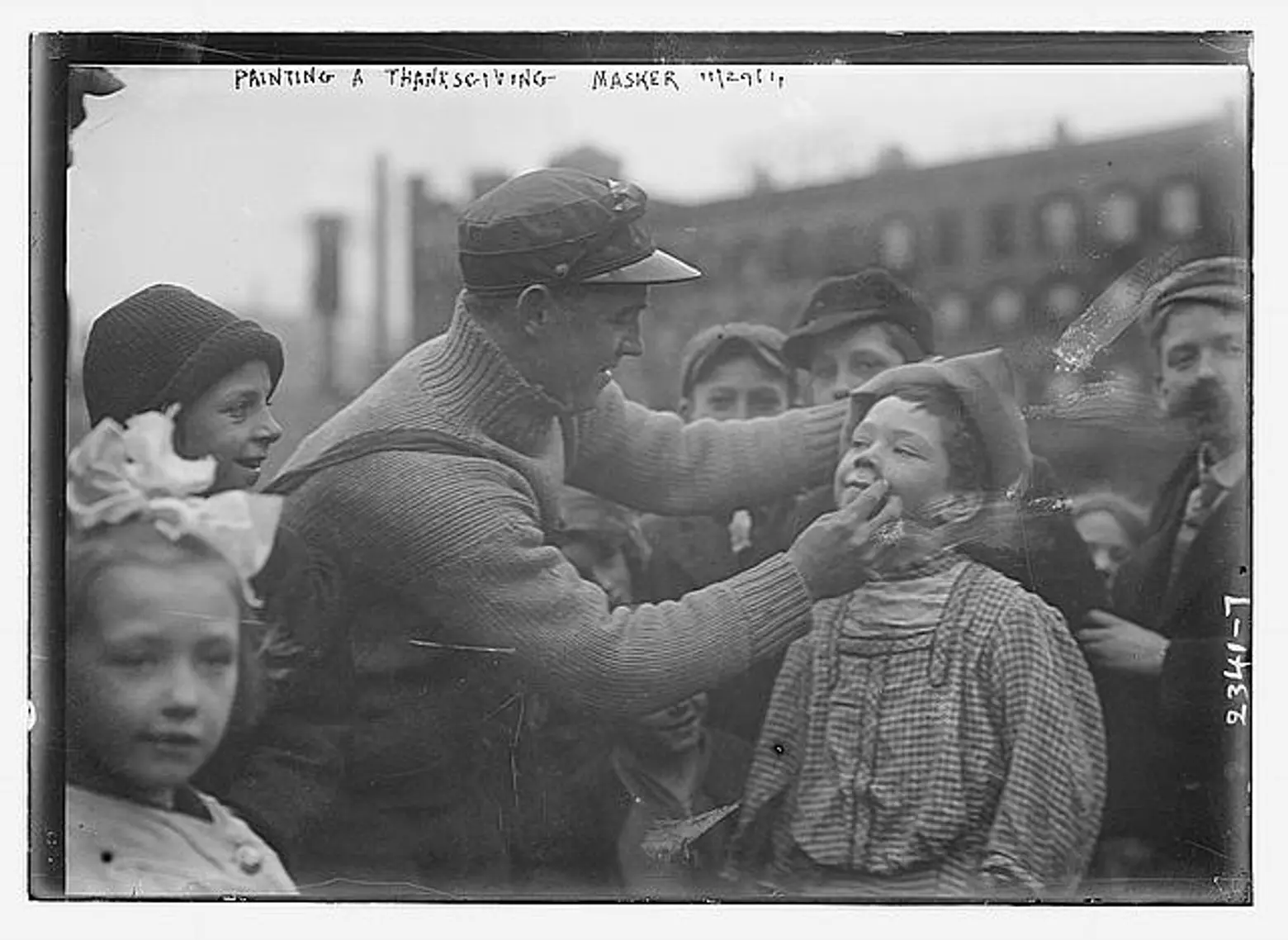 Ragamuffins circa 1910-1915, via the Library of Congress
Ragamuffins circa 1910-1915, via the Library of Congress
If you’re bemoaning the loss of his quirky Thanksgiving tradition, there are still a few enduring signs of the ragamuffins in New York. In Bay Ridge, Brooklyn, there has been a Ragamuffin Parade since 1967 around Halloween. Hoboken, New Jersey, also continued to hold a Ragamuffin Parade and costume contest on the afternoon of Halloween.
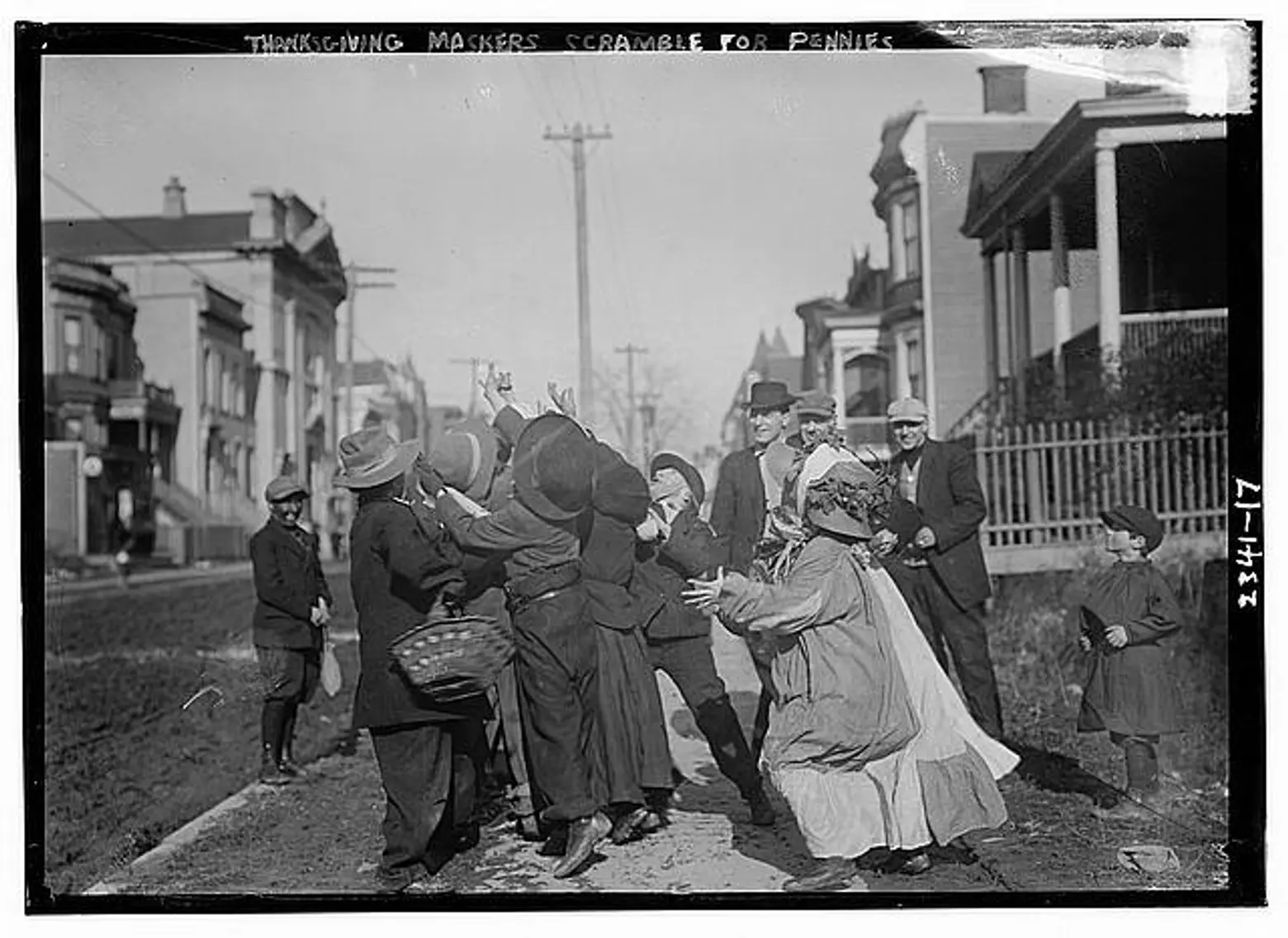 Ragamuffins circa 1910-1915, via the Library of Congress
Ragamuffins circa 1910-1915, via the Library of Congress
Editor’s note: The original version of this story was published on November 21, 2017, and has since been updated.
RELATED:
- The history of Macy’s Thanksgiving Day Parade, a grand NYC tradition
- A history of the Village Halloween Parade: Puppets, performers, and NYC pride
- 255 years ago, the first recorded St. Patrick’s Day parade was held in NYC
